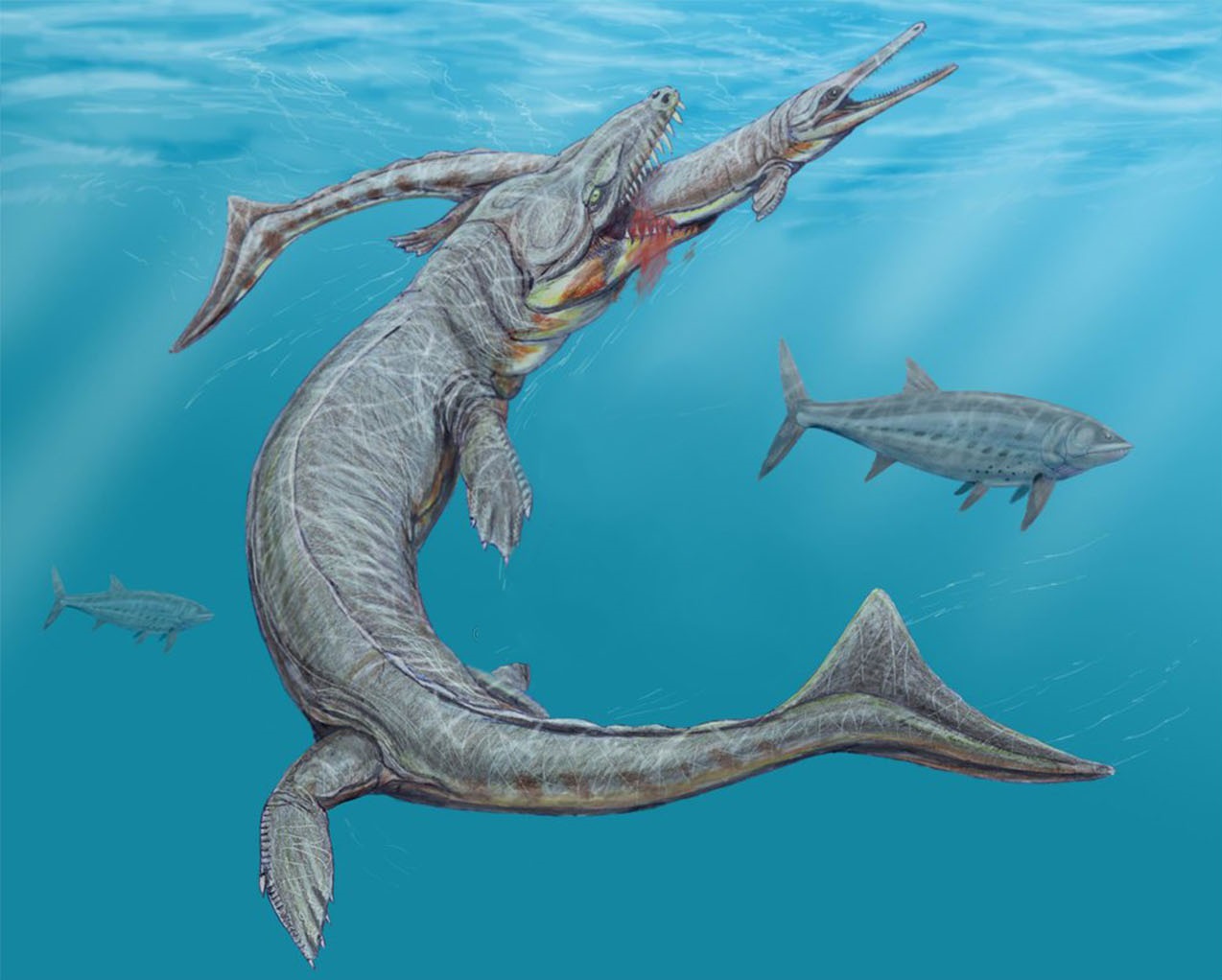Paleontologists have discovered a fossil of a 180-million-year-old crocodyliform that they say is a long-sought missing link in the evolution of some ancient crocodiles to dolphin-like creatures.

An artist’s impression of Magyarosuchus fitosi. Image credit: Marton Szabo.
Dubbed Magyarosuchus fitosi, the ancient crocodile lived during the Early Jurassic epoch in the Mediterranean region of the Tethys Ocean.
It is what paleontologists called a crocodyliform, part of a group known as the crocodilians that includes extant alligators and caimans.

The incomplete skeleton of Magyarosuchus fitosi was unearthed in Gerecse Mountains in north-west Hungary in 1996.
It was analyzed by Dr. Mark Young from the University of Edinburgh and his colleagues from Hungary and Germany.

“Magyarosuchus fitosi was one of the largest coastal predators of the Jurassic period,” the paleontologists said.
“It was 15.3-15.9 feet (4.67-4.83 m) long and had large, pointed teeth for grasping prey. It also shared key body features seen in two distinct families of prehistoric crocodiles.”
Some Jurassic-era crocodiles had bony armor on their backs and bellies, and limbs adapted for walking on land; another group had tail fins and flippers but did not have armor.

Magyarosuchus fitosi was heavily armored but also had a tail fin, suggesting it is a missing link between the two groups.
“This fossil provides a unique insight into how crocodiles began evolving into dolphin and killer whale-like forms more than 180 million years ago,” Dr. Young explained.
“The presence of both bony armor and a tail fin highlights the remarkable diversity of Jurassic-era crocodiles.”
Source: sci.news








